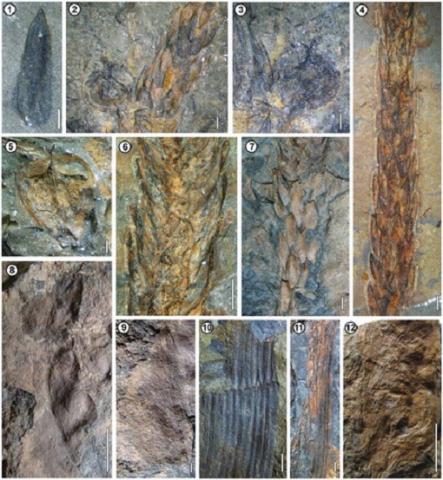Silvia N. Césari, María Fernanda Gaido, Marcelo I. Cegarra, Gabriela Anselmi and Carlos o. Limarino
2 014
Ameghiniana 51(5):428-432. 2014
The Ansilta Formation (Harrington, 1971) is one of the thickest upper Paleozoic sequences of the western Precordillera in San Juan Province (Argentina). Its lower section includes diamictites and mudstones with dropstones, which were the subject of study in previous papers about this unit (Amos and Rolleri, 1965; López Gamundí, 1986).
The facies association analysis by Limarino et al. (2011) led to the interpretation of the palaeoenvironmental evolution of the Ansilta Formation and the correlation of its deposits with the regional stratigraphic scheme proposed by Limarino et al. (2006) in the western basins of Argentina. In this context, the first facies association (FA I), consisting of diamictites, mudstones with dropstones and sandstones, (occasionally pebbly) corresponds to the Gondwanan glacial interval recognized in basins in western Argentina. According to recent radiometric dating (Gulbranson et al., 2010), this glacial event is neither older than 335.99 Ma (Viséan) nor younger than 319.57 Ma (Bashkirian), assuming a Serpukhovian age for the diamictites. This suggested age for the basal section of the Ansilta Formation (= San Eduardo Formation sensu Taboada, 2004, 2010) is consistent with the record of paleofloristic elements of the Nothorhacopteris-Botry-chiopsis-Ginkgophyllum Biozone (NBG) reported by Carrizo and Fasolo (1999), and the Bashkirian invertebrate fauna above the diamictitic interval (Taboada, 2010).
Stratigraphic sections, located to the south of those that were traditionally studied in Agua de los Burros Creek (Fig. 1) belonging to the upper section of the Ansilta Formation preserve plant remains that allow us to extend the age of the outcrops in the Ansilta Range to the Permian.
The facies association analysis by Limarino et al. (2011) led to the interpretation of the palaeoenvironmental evolution of the Ansilta Formation and the correlation of its deposits with the regional stratigraphic scheme proposed by Limarino et al. (2006) in the western basins of Argentina. In this context, the first facies association (FA I), consisting of diamictites, mudstones with dropstones and sandstones, (occasionally pebbly) corresponds to the Gondwanan glacial interval recognized in basins in western Argentina. According to recent radiometric dating (Gulbranson et al., 2010), this glacial event is neither older than 335.99 Ma (Viséan) nor younger than 319.57 Ma (Bashkirian), assuming a Serpukhovian age for the diamictites. This suggested age for the basal section of the Ansilta Formation (= San Eduardo Formation sensu Taboada, 2004, 2010) is consistent with the record of paleofloristic elements of the Nothorhacopteris-Botry-chiopsis-Ginkgophyllum Biozone (NBG) reported by Carrizo and Fasolo (1999), and the Bashkirian invertebrate fauna above the diamictitic interval (Taboada, 2010).
Stratigraphic sections, located to the south of those that were traditionally studied in Agua de los Burros Creek (Fig. 1) belonging to the upper section of the Ansilta Formation preserve plant remains that allow us to extend the age of the outcrops in the Ansilta Range to the Permian.

